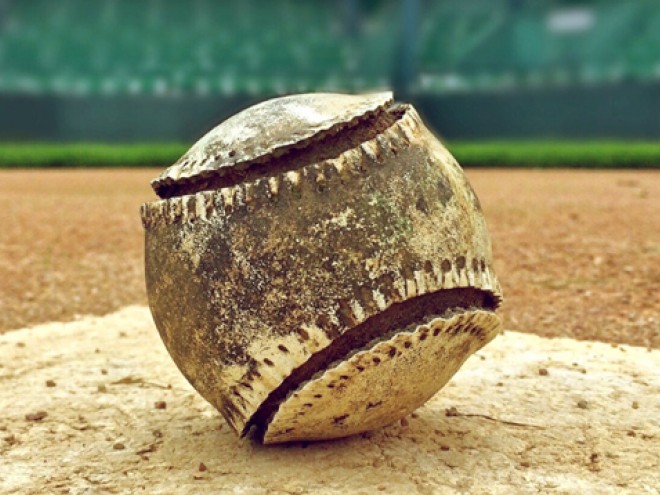Earlier this week, Jay Neugeboren shared his personal list of the Jewish sports heroes that made him feel more American. Jay is guest blogging all week as part of the Visiting Scribe series here on The ProsenPeople.
I grew up during the years of the great Brooklyn Dodger teams of the forties and fifties, and I rooted especially for the handful of their Jewish players: Cal Abrams, Al “Goodie” Rosen, Sandy Koufax, and third base coach, Jake Pitler. I also rooted for Jewish athletes who were prominent in other sports: football, basketball, wrestling, tennis, table tennis, and boxing.
In boxing, my great hero was Max Baer, who, though he wore a Star of David on his boxing trunks, was only one quarter Jewish. His grandfather, of French-Jewish ancestry, was a butcher, and named his sons for the tribes of Israel. Max’s father, Jacob, was a butcher too, and his early education took place in Jewish schools.
Baer became a professional boxer in 1929. One year later, in a bout that scarred his heart forever, he knocked out a fighter named Frankie Campbell. Campbell, whose brother, Dolph Camilli, later became a star first-baseman for the Brooklyn Dodgers, never woke up, and died that night. Max was severely distraught, and in later years quietly put three of Campbell’s children through college.
In 1933, Baer, a contender for the heavyweight championship, fought against “Hitler’s boxer,” Max Schmeling, before more than 60,000 people, and it was for this fight — because of his anger at the news coming out of the Third Reich, and his pride in being part-Jewish — that he first put a Star of David on his boxing trunks, an emblem he would wear in every fight after that.
Schmeling was heavily favored, but Baer defeated him easily, and the referee stopped the fight in the tenth round, and awarded Baer the victory by technical knockout. But Baer, ever a showman, had his great moment just before the fight’s end. When he had Schmeling on the ropes, he called out, for all the newspaper reporters to hear: “This one’s for Hitler!” Then, in the lingo of the ring, he rang Max Schmeling’s bell.
One year later, Baer defeated Primo Carnera for the heavyweight championship of the world. Again the showman, at the weighing-in ceremony, Baer began plucking hairs from Carnera’s chest. “He loves me … he loves me not,” Baer said. During the fight, when Carnera dragged Baer to the canvas with him, Baer called out, for all to hear: “Last one up’s a sissy.”
Baer lost the championship a year later to James Braddock, but continued to fight until 1941, when he enlisted in the Army. His lifetime record was 72 wins (more than 50 by knockout), and twelve defeats.
Baer was also a movie star, and appeared, opposite Myrna Loy, in his first movie, The Prizefighter and the Lady, in 1933, and in nearly two dozen movies after that, the last one, The Harder They Fall, with Humphrey Bogart, in 1956. He also played the vaudeville circuit, often with another Jewish fighter, one-time light heavyweight champion, “Slapsie Maxie” Rosenbloom.
Max Baer had three children by his third wife (including Max Baer Jr., of Beverly Hillbillies fame), and affairs with many women, including Greta Garbo, Jean Harlow, and Mae West. He died at the age of 50.
Small wonder I was enchanted by this man, and by his wild, wonderful, and improbable life. And so I invited him to be a character in my novel, Max Baer and the Star of David. Although in the novel, all the data is accurate, the character of Baer is invented. I have also given Max two close friends: Horace and Joleen Littlejohn, a black couple — Horace as Max’s Man Friday and sparring partner;  Joleen as Max’s housekeeper and tutor to his children — as well as a son, Horace Littlejohn Jr.
Joleen as Max’s housekeeper and tutor to his children — as well as a son, Horace Littlejohn Jr.
While non-fiction generally deals with the world of the probable, fiction deals with the world of the possible. Thus, a biography of Max Baer might aim to show us what his life was probably like, whereas my novel shows us what it might possibly have been but never was. The latitude and longitude of my novel true, but the life I’ve given to him is invented.
My hope is that the invented Max Baer of my novel will, for readers, be at least as real as if the real Max Baer had never existed.
Jay Neugeboren is the author of nearly two dozen books, including two prize winning novels, two prize-winning non-fiction books, four collections of award-winning stories, and his most recent novel, Max Baer and the Star of David.
Related Content:
- Blows to the Head: How Boxing Changed My Mind by Binnie Klein
- Beyond Glory: Joe Louis vs, Max Schmeling, and a World on the Brink by David Margolick
- Reading List: Jewish Athletes




